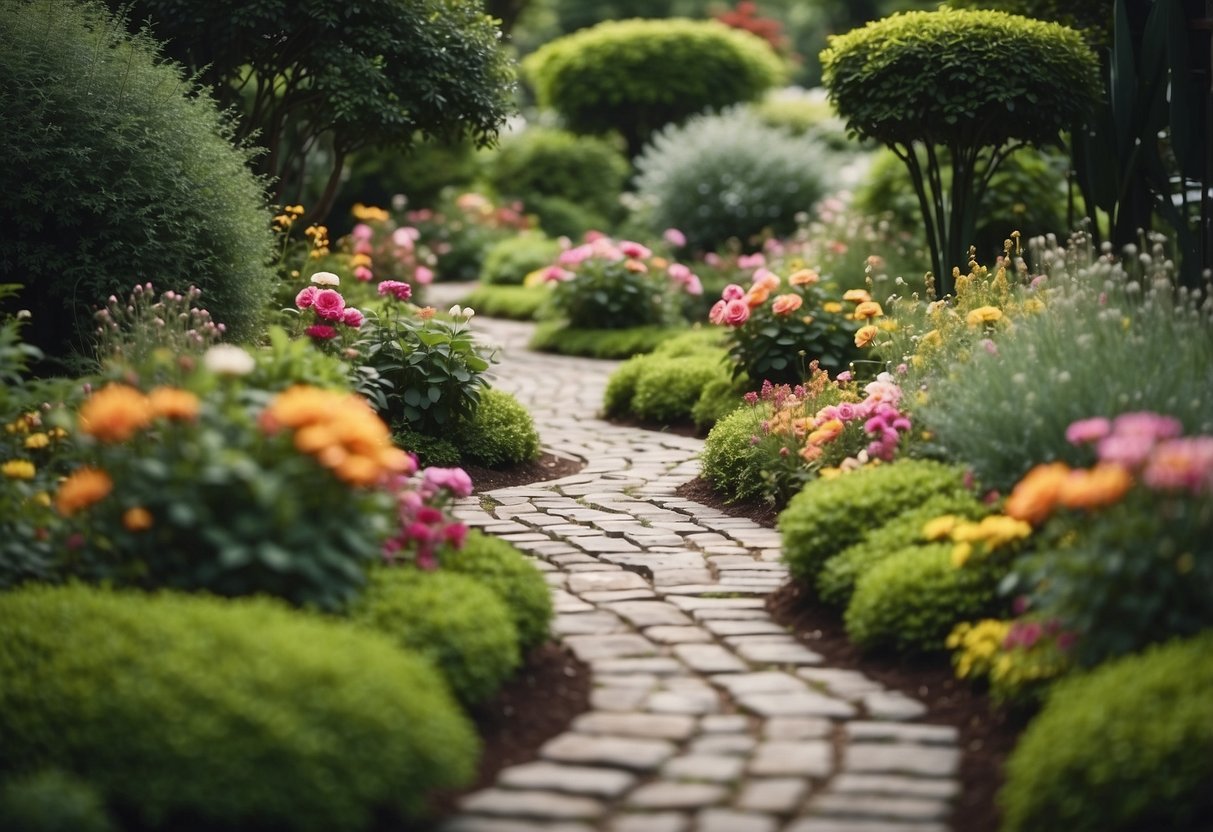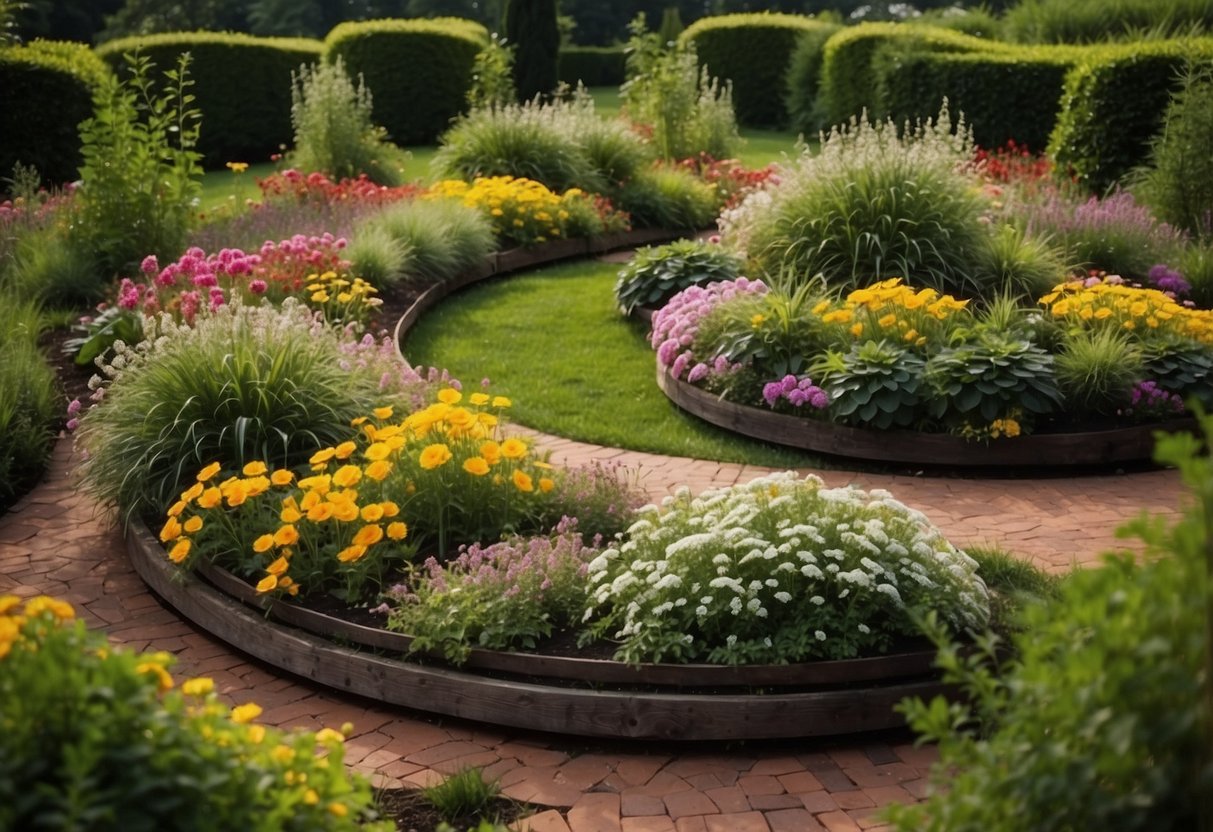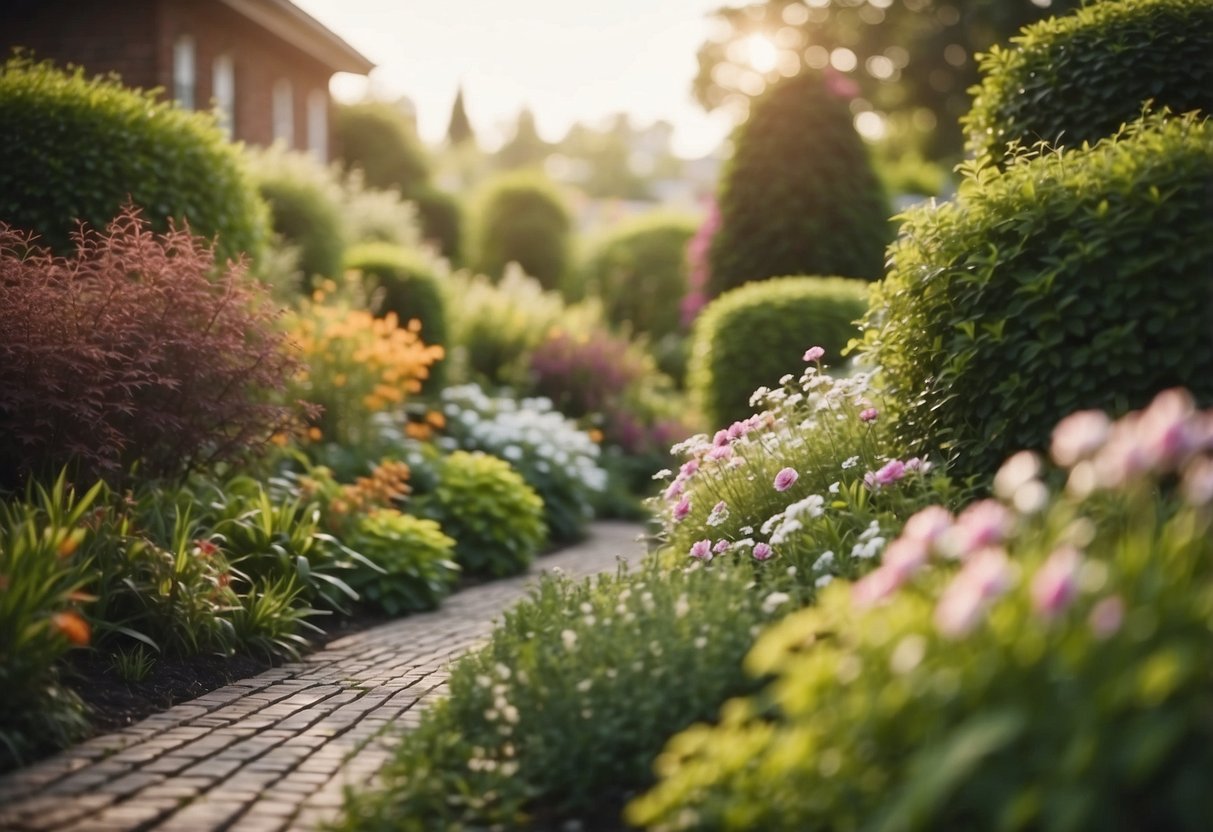Curved Garden Ideas: Creative Designs for a Stylish Outdoor Space
Curved garden ideas can transform any outdoor space into a beautiful and inviting retreat. Whether you have a small backyard or a large garden, adding curved elements brings a sense of tranquility and natural flow to your landscape. By using curving pathways, arched trellises, and softly rounded planters, you can create a garden that feels both dynamic and relaxing.

Are you looking for ways to add charm and elegance to your garden? Embracing curved designs not only makes your garden look more aesthetically pleasing but also maximizes the space. From seating areas to flower beds, curved designs help soften the overall appearance and make every corner feel more welcoming. Dive in to explore different ways you can incorporate these ideas into your own garden and enjoy a space that’s uniquely yours.
1) Curved Stone Pathways

Curved stone pathways add a charming touch to your garden. By arranging horizontal stone slabs within a bed of gravel, you can create a graceful walkway. This design blends seamlessly with surrounding plants and greenery.
Curved paths can also make your garden feel larger. When you meander through the greenery, the journey feels longer and more relaxing. Consider using a mix of stone sizes and colors for extra visual appeal.
With curved paths, you can also guide visitors to unique garden features like fountains or benches. Enjoy the serene experience on your new curved stone pathway.
2) Circular Flower Beds

Circular flower beds create a striking focal point in any garden. You can choose a center point like a sculpture or a birdbath to make it even more eye-catching. Arrange your plants around this center to create a balanced look.
Consider using plants with complementary colors. For example, pairing blue and orange flowers can make your garden pop. This color contrast adds a touch of elegance and visual interest.
Curved beds are not only aesthetically pleasing but also help guide the eye throughout the garden, creating a sense of flow and harmony. Planting shade-loving plants like hostas can add lush greenery and texture.
3) Wavy Garden Borders

Wavy garden borders add a nice flow to your landscape. Unlike straight edges, they bring a sense of movement and can make a garden seem larger.
You can use materials like steel, which offers durability and flexibility. Plastic edging is a cost-effective option that’s easy to shape into waves.
For a more natural look, you could use terra cotta edging tiles. These can be styled in wavy patterns to add a charming touch to your garden.
4) Spiral Topiary Designs

Spiral topiary designs are a fantastic way to add a touch of elegance to your garden. These twists and turns can transform any space, making it look sophisticated and neat.
Place a spiral topiary at your front entrance to create a welcoming vibe. Using a pair can frame any vista beautifully.
You can also position them on your deck or patio. Spiral topiaries add style and become an instant conversation starter for guests. Learn how to create them at Garden Gate.
5) Curved Wooden Benches

Curved wooden benches add a gentle, natural touch to your garden. They can transform any outdoor space into a cozy spot for relaxation.
Wooden benches with a curved design fit well with various garden styles. You can place one under a tree or along a winding path for a charming effect.
Different types of wood, like cedar or teak, can be used for curved benches. They offer durability and beauty, making them a favorite choice for many garden enthusiasts. If you’re looking for ideas, you might find some great options here.
6) Round Patio Areas

A round patio can be a stunning focal point in your garden. The circular shape is both inviting and visually appealing.
Consider adding curved walls around the patio to create a cozy spot. Plant flower beds nearby for extra beauty.
For a more extended design, integrate matching pathways that lead to and from your circular patio. Check out more ideas here.
7) Sinuous Water Features

Sinuous water features can add an element of calm to your garden. Their gentle curves guide the eye and create a soothing atmosphere.
Consider installing a curved pond or stream. The flowing lines of the water make your garden feel more natural and organic.
You might also like a curved fountain. The graceful arcs of water can be both relaxing and visually appealing.
8) Arched Pergolas

Adding an arched pergola to your garden can create a beautiful and inviting space. The curved design adds a touch of elegance and can make any outdoor area more charming.
You can use an arched pergola to frame a patio, providing a shaded area for relaxation. These structures also offer a great support for climbing plants and vines, enhancing their beauty.
Consider choosing materials like cedar or pine for durability. Whether you build it yourself or purchase a kit, an arched pergola is a stunning addition to any garden. Check out unique designs at Fresh Patio.
9) Crescent-shaped Planting Beds

Crescent-shaped planting beds are a fantastic way to add flow and interest to your garden space. The curved design creates a sense of movement and can help define different areas of your yard.
These beds are perfect for framing a cozy seating nook or a small patio. They can be filled with colorful blooms and fragrant herbs, making them a beautiful and practical addition.
You might also like the idea of planting taller plants at the back and shorter ones in the front. This layering effect will make your crescent-shaped beds stand out even more. For more ideas, check out curved raised garden beds.
10) Flowing Garden Walls

Flowing garden walls can give your outdoor space a gentle, natural look. These walls often feature curves that mimic natural landscapes. They can be made from materials like stone, brick, or even timber.
Curved garden walls also help guide the eye around your garden, making the space feel larger. They are perfect for creating cozy, separate areas in your yard.
Adding plants that spill over the edges of the flowing walls can enhance the organic feel. This can make your garden blend seamlessly with the walls. For more ideas, check out these curved garden wall examples.
Understanding Curved Garden Design

Curved garden designs can add flair and interest to your outdoor space. They offer numerous benefits and follow key principles to create a visually appealing and functional garden.
Benefits of Curved Garden Layouts
Curved garden layouts make spaces feel more dynamic and inviting. They draw the eye along smooth lines, creating a sense of flow and movement. Unlike rigid, straight lines, curves can make your garden appear larger and more intricate.
Curves also promote a natural look. Gardens with curves often mimic the waves and bends found in nature, making them more relaxing. This design helps to create a cozy and private feel by enclosing sections of your garden.
Additionally, curved paths and beds can help you manage your space better. They can guide foot traffic, leading visitors through the garden in a pleasing way. Plus, these layouts can hide less attractive spots or direct attention to highlight features like flowering plants or water elements.
Principles of Curved Garden Design
When designing a curved garden, consider scale and proportion. Your curves should be gentle and well-proportioned to avoid looking unnatural. Too many tight or exaggerated curves can make your garden look disorderly.
Another principle is the balance between curves and straight lines. Mixing some straight lines with curves can add structure and contrast without overpowering the design. For example, pair a curved garden bed with a straight path for an appealing contrast.
Use focal points to enhance the curves. Elements like benches, sculptures, or water features can serve as endpoints for curved paths, making the design more cohesive. Plants with rounded shapes, like boxwoods, can complement the curves.
Lastly, consider low-maintenance plant choices. Some plants thrive better in these layouts, requiring less upkeep. For more vigorous plants with a natural growth habit, curved designs work beautifully.
Incorporating Curved Elements

Curved elements in your garden can create a sense of movement and make your space feel more interesting. Key features include pathways and flower beds that bend and flow naturally.
Pathways and Walkways
Curved pathways guide you through the garden, giving it a more engaging look. They can be made from materials like stone, brick, or gravel, depending on your style.
A stone pathway with gentle curves can make even a small garden seem larger. Use bricks to outline these paths to add a neat edge and keep materials in place. Gravel is another good option because it’s easy to shape and reposition as needed.
When designing curved walkways, think about where you want people to go. Curves can lead to focal points like a fountain, statue, or seating area. Ensure walkways are wide enough for comfortable walking, especially if you’re going through flower beds or other narrow areas.
Curved Flower Beds
Curved flower beds can soften the edges of your garden, making it feel more organic. These beds can follow the natural contours of your landscape or create new flowing shapes.
Use perennials that thrive in your climate for long-lasting blooms. Native plants work well, as they are already adapted to the local soil and weather. Strategic layering is key when planting a curved bed. Place taller plants at the back and shorter ones at the front to create a cascading effect.
Mulch is useful for maintaining the shape of curved beds and helping with weed control. It also helps retain moisture, which is beneficial for the health of the plants in your garden. For a striking visual interest, consider adding curved borders using stones or other edging materials.
By incorporating these elements, you create a harmonious and visually appealing garden space. Using curves adds a natural feel and can make a garden of any size feel more dynamic and inviting.







